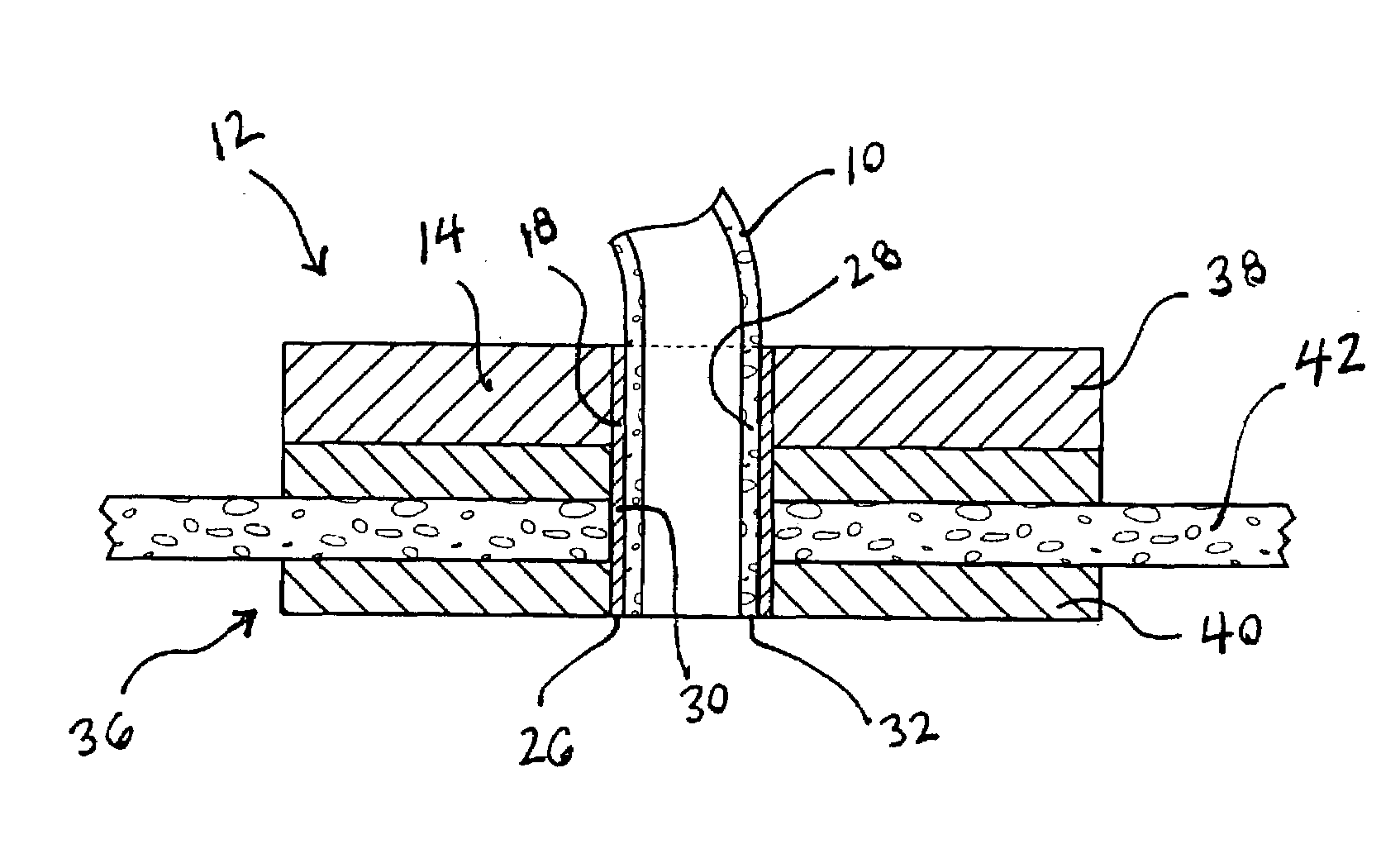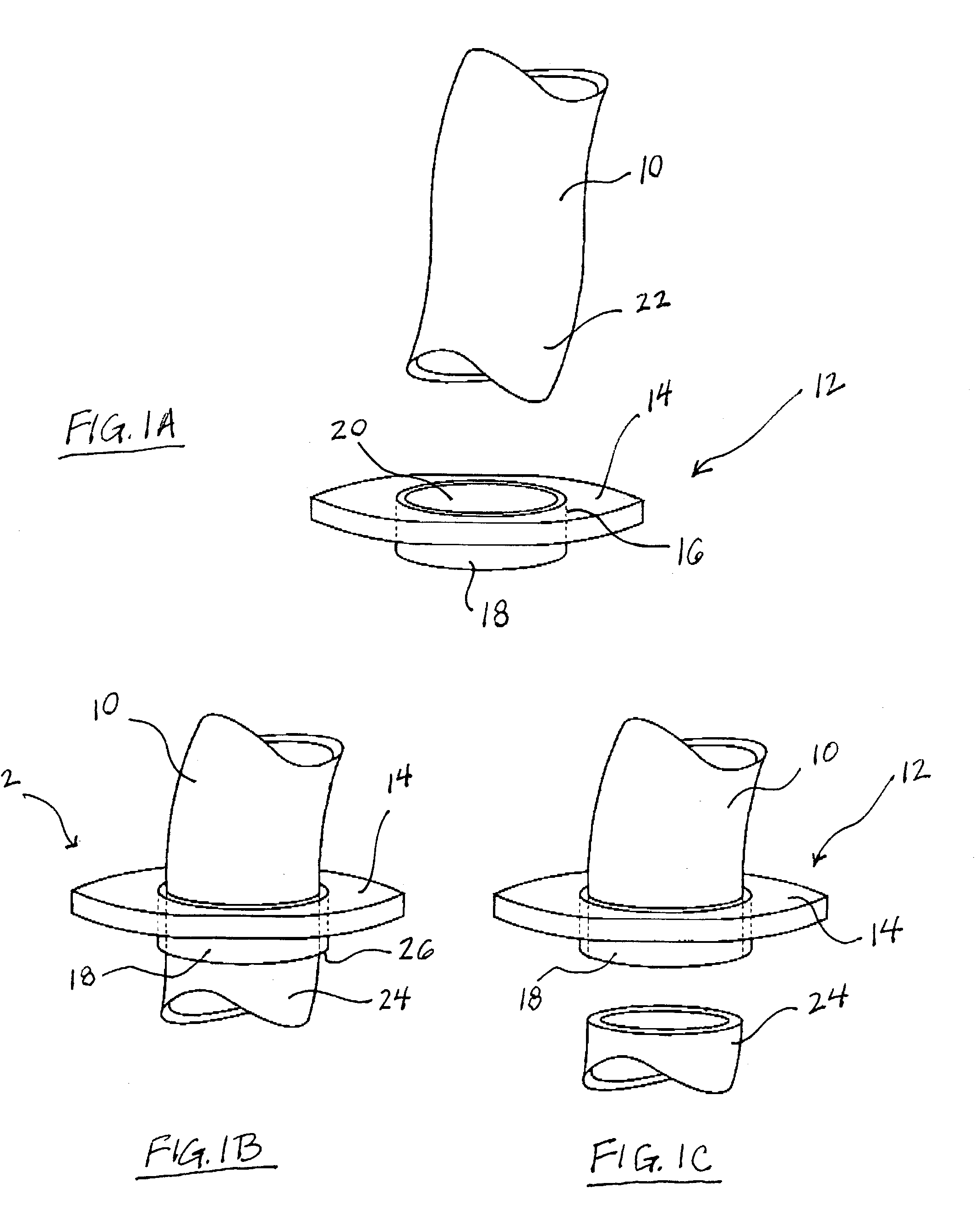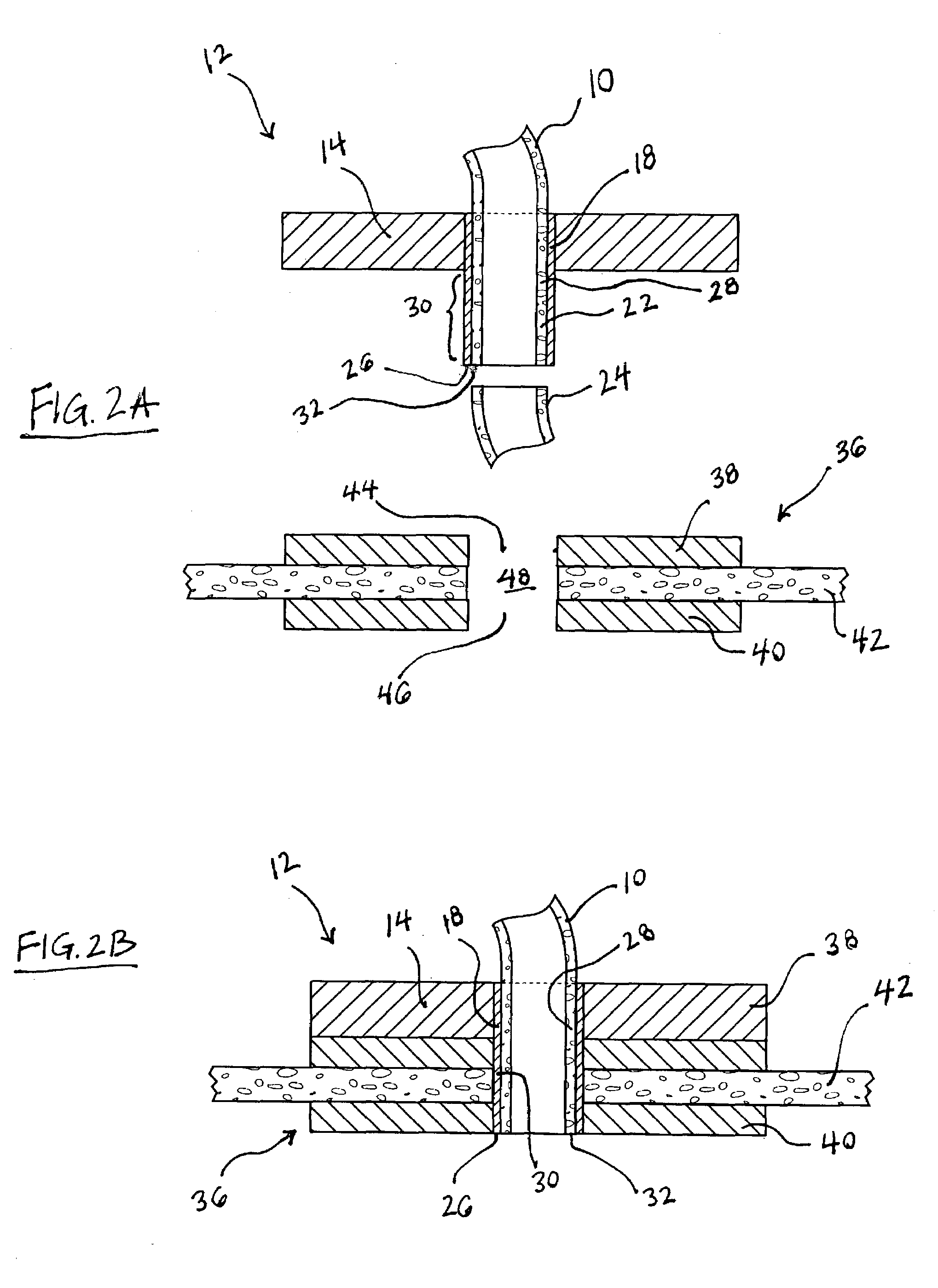Components, systems and methods for forming anastomoses using magnetism or other coupling means
a technology of magnetism and coupling means, applied in the field of hollow anatomical structures having a lumen, can solve the problems of high technical and time-consuming procedure of forming handsewn anastomosis, heart disease remains the leading cause of death in much of the world, and the manipulation of the aorta puts patients at risk
- Summary
- Abstract
- Description
- Claims
- Application Information
AI Technical Summary
Benefits of technology
Problems solved by technology
Method used
Image
Examples
Embodiment Construction
[0050]With reference to FIGS. 1A–1C, a first embodiment of the invention is shown alongside a first vessel, organ, or part thereof, indicated by reference numeral 10. The various embodiments may be used to form an anastomosis between vessels, organs, or any anatomical structure having a lumen, for example. The invention also encompasses devices and methods for repairing a diseased body lumen.
[0051]It will be appreciated that the invention has applications beyond the specific uses mentioned above. Additional exemplary applications for the invention are disclosed in the aforementioned priority applications, the entire subject matter of each application being expressly incorporated herein by reference.
[0052]A first anastomotic component 12 comprises a body which, in the illustrated embodiment, is an annular member 14 having an opening 16. The anastomotic component 12 also includes a sleeve 18 with a lumen 20 (FIG. 1A). An end portion 22 of the first vessel 10 is passed through the lume...
PUM
| Property | Measurement | Unit |
|---|---|---|
| diameter | aaaaa | aaaaa |
| length | aaaaa | aaaaa |
| thickness | aaaaa | aaaaa |
Abstract
Description
Claims
Application Information
 Login to View More
Login to View More - R&D
- Intellectual Property
- Life Sciences
- Materials
- Tech Scout
- Unparalleled Data Quality
- Higher Quality Content
- 60% Fewer Hallucinations
Browse by: Latest US Patents, China's latest patents, Technical Efficacy Thesaurus, Application Domain, Technology Topic, Popular Technical Reports.
© 2025 PatSnap. All rights reserved.Legal|Privacy policy|Modern Slavery Act Transparency Statement|Sitemap|About US| Contact US: help@patsnap.com



